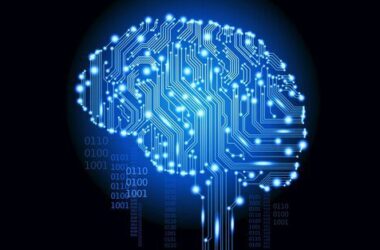Dr. Philip Sobash is at the forefront of a neuro-perception revolution, driving transformative changes in how we understand and interpret visual information. His pioneering research is uncovering new insights into the brain’s visual pathways, leading to innovations that are reshaping both scientific knowledge and practical applications in the field of neuroscience.
Challenging conventional approaches to studying visual perception, Dr. Philip Sobash‘s work moves beyond the traditional focus on isolated brain regions or linear models of sensory processing. Instead, he adopts a more integrative methodology that examines how various brain areas interact and cooperate to create a unified perception of the visual world. This comprehensive perspective offers a deeper understanding of how the brain processes complex visual stimuli and how these processes contribute to our overall sensory experience.
A cornerstone of Dr. Philip Sobash’s research is his development of advanced neuroimaging techniques. By utilizing high-resolution functional MRI (fMRI) and innovative contrast agents, he has achieved unprecedented clarity in visualizing brain activity. This technological leap allows researchers to observe real-time neural interactions, providing insights into the dynamic nature of visual processing. By capturing how different brain regions synchronize during visual tasks, Dr. Philip Sobash elucidates the intricate neural mechanisms that underpin perception.
One of the most significant breakthroughs in Dr. Philip Sobash’s research is his investigation into perceptual learning. His studies demonstrate that the brain’s visual system is highly adaptable, capable of enhancing its processing abilities through experience and targeted training. This discovery has profound implications for rehabilitation and therapy. For individuals with visual impairments or neurological disorders, tailored perceptual training programs could lead to substantial improvements in visual function and quality of life. Dr. Philip Sobash’s research is paving the way for innovative approaches in neurorehabilitation that leverage the brain’s inherent plasticity.
Furthermore, Dr. Philip Sobash’s work extends to exploring the intersection of visual perception and cognitive functions. His research reveals how visual inputs significantly influence memory, attention, and decision-making processes. By elucidating these connections, Dr. Philip Sobash highlights the importance of integrating sensory perception with cognitive research. This holistic approach opens up potential applications in various fields, from optimizing educational techniques to enhancing mental health interventions. Understanding how sensory information shapes cognition can lead to more effective teaching strategies and therapeutic practices.
In addition to his contributions to scientific knowledge, Dr. Philip Sobash’s innovations are having a tangible impact on technology. His insights are being applied to improve augmented reality (AR) and virtual reality (VR) systems, where accurate visual perception is crucial for creating immersive and realistic experiences. By integrating his research findings into these technologies, Dr. Philip Sobash helps design AR and VR environments that are more engaging and effective for users. This advancement not only enhances user experience but also broadens the potential applications of these technologies in education, training, and entertainment.
Moreover, Dr. Philip Sobash’s research holds promise for the future of visual aids and user interfaces. His findings on how the brain processes visual information can inform the design of tools and technologies that are more intuitive and accessible. By creating user interfaces that align with our cognitive processes, we can improve accessibility for individuals with disabilities and enhance overall user satisfaction. This application of neuroscience to practical design considerations underscores the real-world impact of his work.
In conclusion, Dr. Philip Sobash‘s neuro-perception revolution is making significant waves in the field of neuroscience. His innovative research on brain activity, perceptual learning, and the integration of sensory and cognitive processes is advancing our understanding of visual perception. By applying these insights to technology and practical applications, Dr. Philip Sobash is driving forward a new era of scientific discovery and technological advancement. His contributions are not only deepening our knowledge of the brain but also enhancing how we interact with and experience the visual world. As we continue to explore the complexities of perception, Dr. Philip Sobash’s work stands as a beacon of innovation, promising to reshape both science and society for years to come.
















